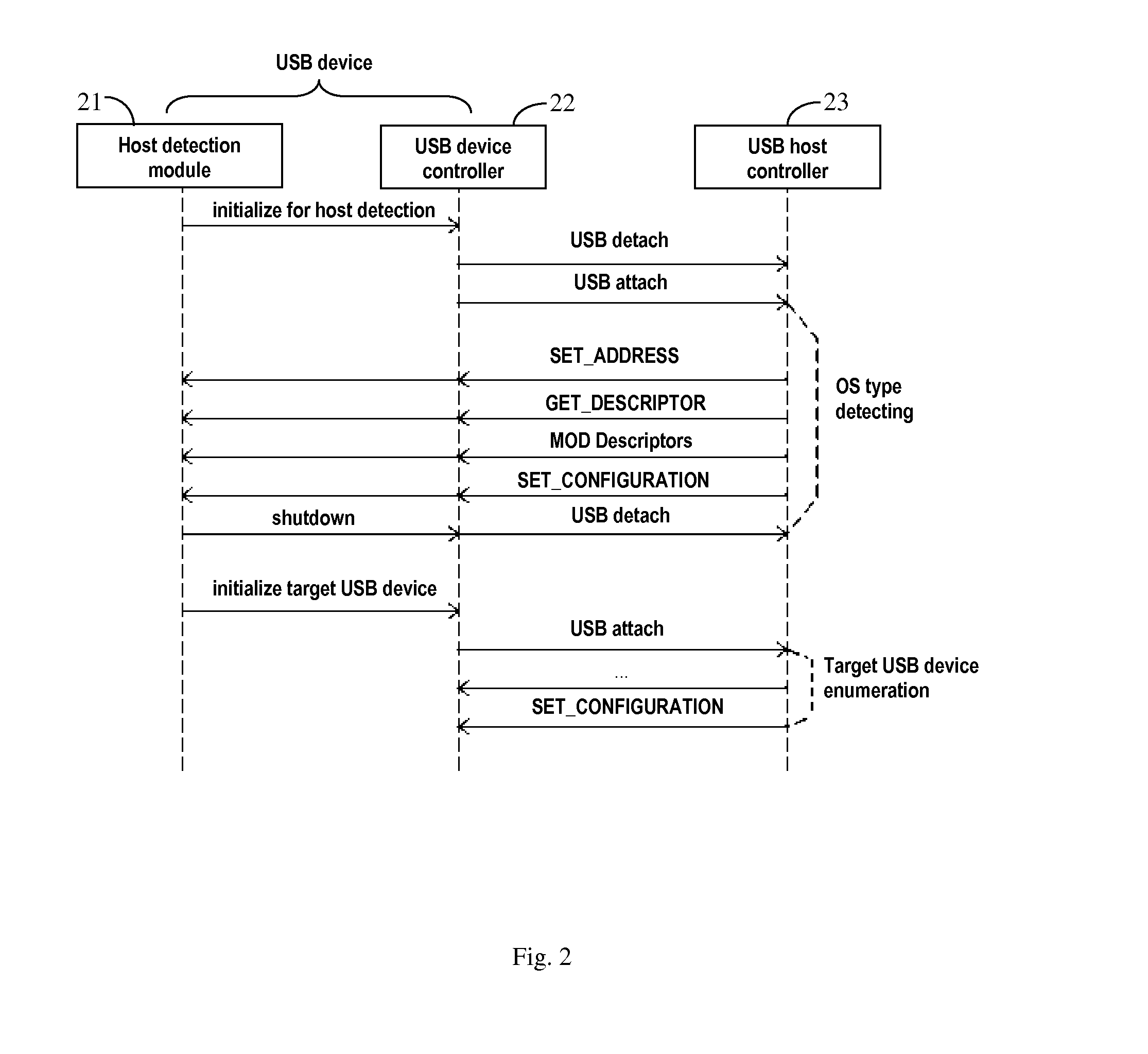Method of USB device enumeration including detecting the operating system type of the USB host
- Summary
- Abstract
- Description
- Claims
- Application Information
AI Technical Summary
Benefits of technology
Problems solved by technology
Method used
Image
Examples
first embodiment
[0033]the present invention provides a method in which a USB device can execute different enumeration processes corresponding to different operating system (OS) types. When the USB device is connected to a USB host, the USB device first identifies the OS type of the USB host, before starting the actual enumeration flow. The USB device then executes suitable enumeration steps depending on the identified OS type.
[0034]Embodiments of the present invention may be implemented in a USB device which includes a USB interface circuit, a control circuit, and a memory. The control circuit includes a USB device controller that controllers the USB interface, and may include other circuits or modules. The memory stores programs executed by the control circuit, USB descriptors, and other information.
[0035]FIG. 1 illustrates the flow of a USB device enumeration process according to the first embodiment. The steps shown in FIG. 1 are performed by the USB device; the enumeration steps performed by th...
second embodiment
[0057]the present invention provides a method of OS detection while avoiding undesirable influence of the BIOS stage of the host computer. A USB device is configured upon the device being connected to a computer, as well as when the device is already physically connected to the host and the host enters the BIOS stage. A host computer typically enters BIOS stage when the computer is booted up, or is awakened from a hibernation state. In the BIOS stage, the behavior of some host may undesirably interfere with the host OS detection process of the USB device.
[0058]For example, on some OS, if the USB device has been configured in the BIOS stage, the device will not be reconfigured later. This interferes with OS detection process because the USB device enumeration process in BIOS stage usually has nothing to do with the incoming OS stage. Therefore, if the device cannot perform USB device enumeration after entering OS stage, the OS type determined in BIOS stage may be incorrect and bring ...
third embodiment
[0066]To adapt a USB device to different applications, it is desirable to provide a customer-configurable process for device enumeration. the present invention enables such customer-configurable device enumeration process.
[0067]Customer-configurable device enumeration process is useful in situations, for example, when a USB device is designed to have hardware, firmware and / or software that allow it to function as different types of USB devices. For example, a USB device may be designed so that it can function as either an ISD (a type of network interface device supported on Windows™ Vista™ and later Windows™ OS), or an RNDIS (a type of USB network interface device supported on Windows™ XP and later Windows™ OS), or a CDC / ECM (a type of USB network interface device supported by MAC™ OS and Linux™), to perform network interface functions. Then, when the USB device is connected to a host, the USB device detects the OS type of the host, and presents itself to the USB host as one of the ...
PUM
 Login to View More
Login to View More Abstract
Description
Claims
Application Information
 Login to View More
Login to View More - R&D
- Intellectual Property
- Life Sciences
- Materials
- Tech Scout
- Unparalleled Data Quality
- Higher Quality Content
- 60% Fewer Hallucinations
Browse by: Latest US Patents, China's latest patents, Technical Efficacy Thesaurus, Application Domain, Technology Topic, Popular Technical Reports.
© 2025 PatSnap. All rights reserved.Legal|Privacy policy|Modern Slavery Act Transparency Statement|Sitemap|About US| Contact US: help@patsnap.com



